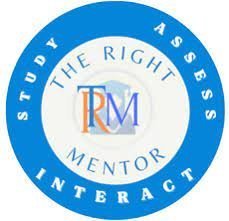Your cart is currently empty!
Course Tools
Study | Assess | intearact
Select Course (Level) & Type Of Educational Tool
FORCE AND PRESSURE | Study
Pre-Requisires
Test & Enrich
Speed Notes
Notes For Quick Recap
Force And Pressure
Force: A push or a pull, that changes or tends to change the state of rest or of uniform motion of an object or changes its direction or shape.
A force arises due to the interaction between two objects.
Force has magnitude as well as direction.Therefore force is a vector quantity.
The SI unit of force is newton. (Scroll down to continue …)
Study Tools
Audio, Visual & Digital Content
A change in the speed of an object or the direction of its motion or both implies a change in its state of motion.
Force acting on an object may cause a change in its state of motion or a change in its shape.
Contact Non Contact Forces:
A force can act on an object with or without being in contact with it. Based on Contact the forces are classclassified as Contact Forces and Non Contact Forces.
Contact Forces: The forces act on a body when the source of force touches the body directly.
The point where the force is applied on an object is called the point of application of force (or point of contact).
Examples of Contact Forces:
(i) Muscular Force: The force exerted by the muscles of the body.
We use force acted by muscles of animals like Humans, bullocks, horses and camels to get our activities done.
(ii) Mechanical Force: The force acted by a machine.
Non-Contact Forces:
Non-Contact Forces: Forces which do not involve physical contact between two bodies on which they act.
Examples of Non-Contact Forces:
(i) Magnetic Force: A magnet exerts a non-contact force on objects made of iron, steel, cobalt or nickel.
(ii) Electrostatic Force: The force which result due to repulsion of similar charges or attraction of opposite charges.
(iii) Gravitational Forces: The force that exists between any two bodies by virtue of
Pressure
Pressure: Thrust acting per unit surface area is called pressure.
Thrust
Thrust is the force acting on an object perpendicular to its surface.
In SI system, pressure is measured in newton per square metre which is equal to 1 pascal (Pa).
Like solids, fluids (liquids and gases) also exert pressure.
A solid exerts pressure only in the downward direction due to its weight, whereas liquids and gases exert pressure inall directions.
Hence liquids and gases exert pressure on the walls of their container.
Atmospheric Pressure
Ttmosphere: The thick blanket of air that covers the earth is termed atmosphere.
The pressure exerted by the atmosphere is called atmospheric Pressure.
The tremendous atmospheric pressure surrounding us is not felt by us because the fluid pressure inside our bodies counter-balances the atmospheric pressure around us.
Dig Deep
Topic Level Resources
Sub – Topics
Select A Topic
Topic:
Chapters Index
Select Another Chapter
- CROP PRODUCTION AND MANAGEMENT | Study
- MICROORGANISMS : FRIEND AND FOE | Study
- COAL AND PETROLEUM | Study
- COMBUSTION AND FLAME | Study
- CONSERVATION OF PLANTS AND ANIMALS | Study
- REPRODUCTION IN ANIMALS | Study
- REACHING THE AGE OF ADOLESCENCE | Study
- FORCE AND PRESSURE | Study
- FRICTION | Study
- SOUND | Study
- CHEMICAL EFFECTS OF ELECTRIC CURRENT | Study
- SOME NATURAL PHENOMENA | Study
- LIGHT | Study
Assessments
Personalised Assessments
Dig Deep
Deep Learning And Testing
Here you can switch between educational tools ( Study & Assess) By Filtering Or Search for Title.



Leave a Reply
You must be logged in to post a comment.